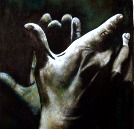Welcome to one of the most active flamenco sites on the Internet. Guests can read most posts but if you want to participate click here to register.
This site is dedicated to the memory of Paco de Lucía, Ron Mitchell, Guy Williams, Linda Elvira, Philip John Lee, Craig Eros, Ben Woods, David Serva and Tom Blackshear who went ahead of us.
We receive 12,200 visitors a month from 200 countries and 1.7 million page impressions a year. To advertise on this site please contact us.
|

|
|
Form structuring- putting it all together
|
You are logged in as Guest
|
|
Users viewing this topic: none
|
|
Login  | |
|

   
Erik van Goch
Posts: 1787
Joined: Jul. 17 2012
From: Netherlands

|
 RE: Form structuring- putting it all... (in reply to Emil_Krasich) RE: Form structuring- putting it all... (in reply to Emil_Krasich)
|
|
|
It all depends on your level of expertise. I worked with local dutch dancers who panicked if you didn't play things exactly like they had in mind and who were not able to improvise at all. I've also worked with world class singers/dancers from spain who improvised on the spot.
Part of the final exam of flamenco students of Rotterdam Conservatory is an unprepared performance with a singer and a dancer you have never met before. You shake hands, are informed which pieces you are supposed to perform and from each piece you roughly agree the order of events.... introduction of the guitar, 2 coplas, falseta, copla, escobilla, finale something like that and their you go. It's up to the singer what copla he is going to sing, it's up to me to choose an intro/falseta/improvisation that fits the mood of the piece and it's up to the dancer to drop the escobillas... i try to fit the dancers input and my playing can inspire them to take different routes/length as well. If everybody speaks the language and knows when to lead and when to fallow one can do whatever feels fine (by matter of speaking). A llamada generally is used as a cue to tell the others something is going to end/change and most of the time you feel it coming way in front
The antenna to know when to play what, at which speed and for how long simply refines when you get more experienced and is part of the language called flamenco. No experienced dancer is going to interrupt your falseta because he is out of passes but you might indeed screw up the intended escobilla....or inspire/force them to improvise on the spot. One of the luxuries i had was that the artists i worked with generally were way better as i was and always willing/able to adapt to my level if i could not cope with their demanding material. In general the body language of the dancer will tell you when it's time to drop/end a falseata or when it's time to start singing and that moment is clear to everybody who speaks the language at that level. That's the luxury of being good, you can improvise, take your moments when possible and just have fun. Obviously there are also very complex performances that use large parts of extremely rehearsed material (like "fixed" escobillas with especially composed material) but that doesn't mean there is no room to challenge each other. The very best flamenco is based on mutual inspiration and the spirit of the moment which can occur both in improvised and rehearsed material. I knew a guitar player who was not able to make a singer sing simply because every time the moment was there "to many notes" were played... there simply was no que/invitation to the singer to join in. It's like an estafette.... at the right moment one has to pass the lead to the next person in line (or claim it yourself) and if everyone knows how to do that the when is no longer a question.
|
|
|
|
REPORT THIS POST AS INAPPROPRIATE |
Date Feb. 4 2014 19:55:04
 |
|
 New Messages New Messages |
 No New Messages No New Messages |
 Hot Topic w/ New Messages Hot Topic w/ New Messages |
 Hot Topic w/o New Messages Hot Topic w/o New Messages |
 Locked w/ New Messages Locked w/ New Messages |
 Locked w/o New Messages Locked w/o New Messages |
|
 Post New Thread
Post New Thread
 Reply to Message
Reply to Message
 Post New Poll
Post New Poll
 Submit Vote
Submit Vote
 Delete My Own Post
Delete My Own Post
 Delete My Own Thread
Delete My Own Thread
 Rate Posts
Rate Posts
|
|
|
Forum Software powered by ASP Playground Advanced Edition 2.0.5
Copyright © 2000 - 2003 ASPPlayground.NET |
0.078125 secs.
|


 Printable Version
Printable Version










 New Messages
New Messages No New Messages
No New Messages Hot Topic w/ New Messages
Hot Topic w/ New Messages Hot Topic w/o New Messages
Hot Topic w/o New Messages Locked w/ New Messages
Locked w/ New Messages Locked w/o New Messages
Locked w/o New Messages Post New Thread
Post New Thread